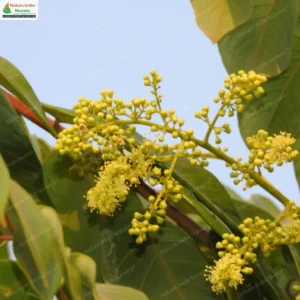Monoon longifolium, commonly known as the False Ashoka, is a medium-sized evergreen tree that grows to 30-35 meters tall, native to southern India and Sri Lanka. It is widely cultivated in tropical regions for its ornamental value and ability to reduce noise pollution. The tree has a narrow, columnar crown with weeping branches. The leaves are long, narrow, and lanceolate with wavy edges, starting as coppery brown when young and maturing to a dark green. The tree produces star-shaped, pale green to greenish-yellow flowers in clusters, which bloom in the spring. The fruits are smooth, ovoid, and turn from yellowish-green to purplish-black as they ripen.
The False Ashoka tree plays a significant role in supporting local wildlife, providing shelter and food for various birds and insects. Its fruits are consumed by birds such as Koels and fruit bats, and its flowers attract bees and other pollinators. The tree’s ornamental value, medicinal properties, and ecosystem role make it a valuable resource for local communities.
Habitat
Monoon longifolium is native to southern India and Sri Lanka.
Planting and Care
-
Propagation Methods: Can be propagated from seeds.
-
Sunlight: Prefers full sunlight but can tolerate partial shade.
-
Soil: Thrives in well-drained, fertile soil.
-
Watering: Requires moderate watering; drought-tolerant once established.
Additional Information
-
Wildlife Significance: Provides shelter and food for various birds and insects. The fruits are consumed by birds such as Koels and fruit bats. The tree attracts bees and other pollinators with its flowers and supports biodiversity and helps maintain ecological balance.
-
Economic Value: Widely planted in gardens, parks, and along roadsides for its aesthetic appeal and ability to reduce noise pollution. Various parts of the tree are used in traditional medicine to treat ailments such as fever, skin diseases, and digestive disorders.































